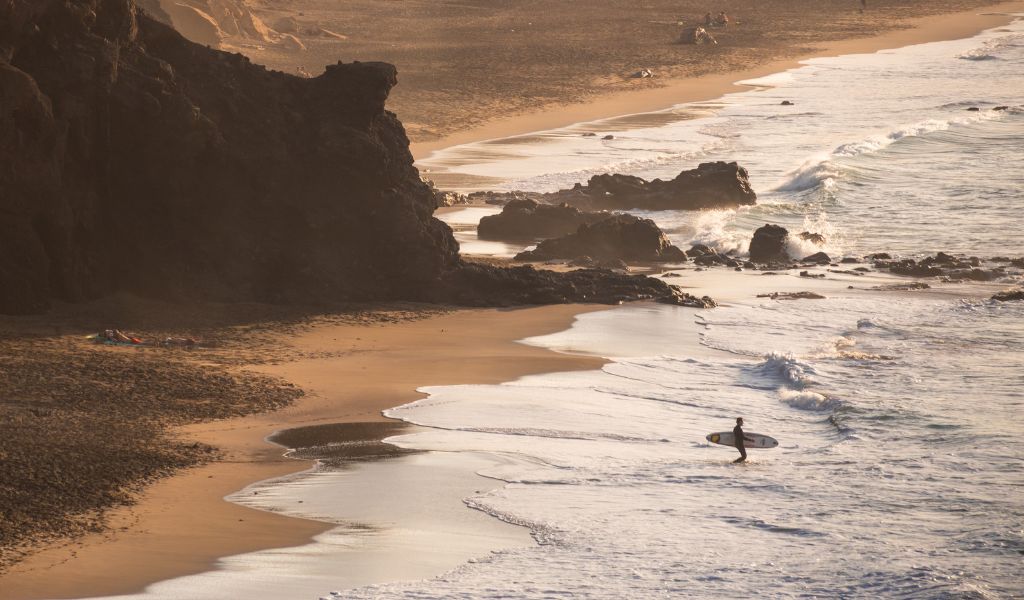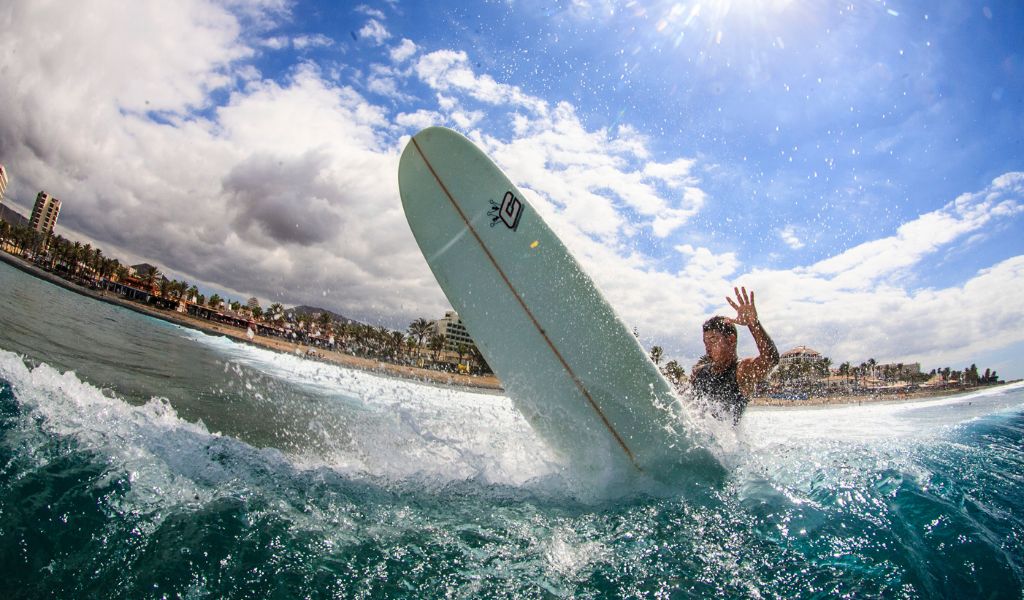
The Canary Islands have become a popular destination for surfers searching out perfect lefts and rights, spectacular peaks, powerful, hollow tubes or long, gentle waves. Due to their unique geographical location, the islands have an ideal beach for every style of surf and receive frequent waves measuring between two and four metres in height. The excellent wind conditions also makes the Canaries a great spot for windsurfing and kitesurfing.
Although conditions in all of the Canary Islands are perfect for these sports, thanks to the climate, the winds and the quality of the waves, which have turned them into a frequent destination on international competition circuits, Lanzarote is regarded as one of the best surfing locations. Famara Beach, ideal for beginners, has hosted many World Surfing Championship events, with the beaches on Fuerteventura being the venue for the Windsurf and Kiteboarding World Championship every year.
The Canary Islands have a great network of surfing facilities, schools and specialist shops where you can buy or hire equipment. There are also lots of surfing events and hotels, along with numerous surf camps too, where you’ll be surrounded by the best surfing atmosphere.
Best waves for surfing in the Canaries

The left-hand wave in San Juan, Lanzarote
On the northwest coast of the island of Lanzarote is one of the best left breaking waves for surfing, not only for its high quality, but also for its excellent location. The left breaking wave of San Juan breaks over a volcanic reef. For this reason, the WQS of the ASP championship is held here as well as other local championships. It can be accessed along a dirt track from the nearby village of Caleta de Famara, and you will be greeted by a small sandy beach with rocks and views of La Graciosa and the cliffs of Famara.
The Lloret wave, Gran Canaria
Located in Las Palmas de Gran Canaria city on the north east coast of Gran Canaria, Lloret is connected to the beach by a promenade. Lloret breaks over a volcanic rock bottom and is regarded as one of Gran Canaria’s best right breaks. Of medium length with a large face divided into sections it can also break left in the right conditions. The best conditions for Lloret are between October and May, at low tide with S-SE-SW-E winds and N-NE-NW-W swell.
The Lobos wave, Fuerteventura
On the south-west coast of Lobos, a small islet north of Fuerteventura, you’ll find the longest wave in the Canary Islands. Los Lobos is an unusual wave but with the right conditions, it becomes the perfect wave in its length, varied sections and quality. The best conditions can be found between October and March, with S-SE-SW-E winds and W-NW-N swell, with waves of one to four metres.
The Igueste wave, Tenerife
The fame of Igueste’s left break is well deserved. On the north-east coast of the island of Tenerife, near the village of Igueste de San Andrés, one of the best left waves for surfing on the island can be found. Over a volcanic stone reef, it forms a long wave with large walls that allow for radical maneuvers and powerful take-offs. When it’s at its best, it forms incredibly hollow sections with pristine barrels. The most regular conditions exist from September to May.

Images: Canary Islands Tourism
